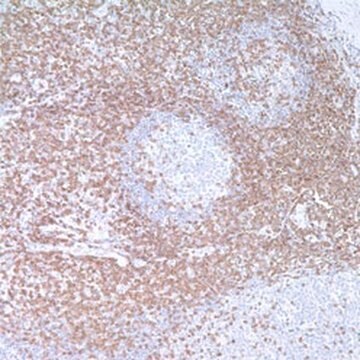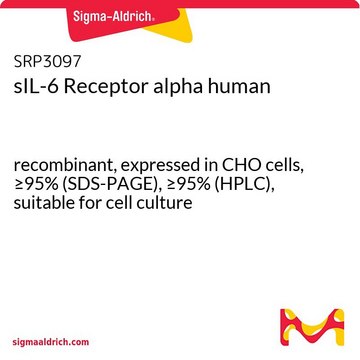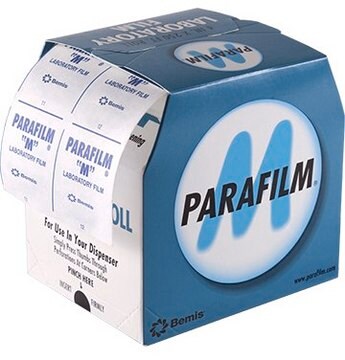추천 제품
생물학적 소스
rat
Quality Level
항체 형태
purified immunoglobulin
항체 생산 유형
primary antibodies
클론
MECA-79, monoclonal
종 반응성
human, mouse
기술
flow cytometry: suitable
immunohistochemistry: suitable (paraffin)
immunoprecipitation (IP): suitable
western blot: suitable
동형
IgMκ
배송 상태
ambient
타겟 번역 후 변형
unmodified
일반 설명
Peripheral lymph node addressin (PNAd) is a mixture of glycoproteins that is expressed on high endothelial venules (HEV) and is required for lymphocyte homing. It is shown to be a ligand for CD62L (L-selectin) that is expressed on the surface of naïve and central memory T cells. PNAd is a sulfated and fucosylated glycoprotein recognized by the prototypic monoclonal antibody, MECA-79. Naïve T cells use PNAd to traffic into lymphoid organs in non-mucosal tissue sites. The interaction of PNAd with CD62L receptor is involved in tethering and rolling of lymphocytes along HEV in lymphoid tissues. Regulated appearance of PNAd+ HEVs is found during ontogeny of lymphoid tissues as well as in chronic inflammatory conditions. PNAd+ HEVs are reported to appear 24-48 h after birth in mouse peripheral lymph nodes and persist throughout life to support recirculation of lymphocytes. In humans PNAd+ HEVs are detected in fetal peripheral lymph nodes. PNAd+ HEVs are also shown to be present in several chronic inflammatory conditions, including thyroiditis, ulcerative colitis, psoriasis, rheumatoid synovitis, and cutaneous lymphomas. In murine models of inflammation, PNAd+ HEV-like vessels develop and these vessels are found to support lymphocyte recruitment. Studies on cancer in murine models and in humans have identified PNAd as a biomarker of improved disease prognosis and blockade of PNAd or its ligand, L-selectin, is shown to abrogate protective antitumor immunity in murine models. (Ref.: Sinha, RK et al. (2006). Vet. Immunol. Immunopathol. 110 (1-2): 97-108).
특이성
Clone MECA-79 detects Peripheral Node Addressin (PNAd) in human and mouse.
면역원
Collagenase-dispersed lymph node stromal cells from BALB/c mice.
애플리케이션
Immunohistochemistry Analysis: A 1:50 dilution from a representative lot detected Peripheral Node Addressin (PNAd) in human liver and human pancreas tissues.
Western Blotting Analysis: A representative lot detected Peripheral Node Addressin (PNAd) in Western Blotting applications (Hemmerich, S., et. al. (1994). J Exp Med. 180(6):2219-26).
Inhibition Analysis: A representative lot detected Peripheral Node Addressin (PNAd) in Inhibition applications (Streeter, P.R., et. al. (1988). J Cell Biol. 107(5):1853-62;Michie, S.A., et. al. (1993). Am. J. Pathol. 143(6):1688-98; Berg, E.L., et. al. (1991). J Cell Biol. 114(2):343-9).
Immunoprecipitation Analysis: A representative lot detected Peripheral Node Addressin (PNAd) in Immunoprecipitation applications (Berg, E.L., et. al. (1991). J Cell Biol. 114(2):343-9).
Immunohistochemistry Analysis: A representative lot detected Peripheral Node Addressin (PNAd) in Immunohistochemistry applications (Sinha, R.K., et. al. (2006). Immunology. 119(4):461-9; Streeter, P.R., et. al. (1988). J Cell Biol. 107(5):1853-62; Michie, S.A., et. al. (1993). Am J Pathol. 143(6):1688-98).
Flow Cytometry Analysis: A representative lot detected Peripheral Node Addressin (PNAd) in Flow Cytometry applications (Sinha, R.K., et. al. (2006). Immunology. 119(4):461-9).
Western Blotting Analysis: A representative lot detected Peripheral Node Addressin (PNAd) in Western Blotting applications (Hemmerich, S., et. al. (1994). J Exp Med. 180(6):2219-26).
Inhibition Analysis: A representative lot detected Peripheral Node Addressin (PNAd) in Inhibition applications (Streeter, P.R., et. al. (1988). J Cell Biol. 107(5):1853-62;Michie, S.A., et. al. (1993). Am. J. Pathol. 143(6):1688-98; Berg, E.L., et. al. (1991). J Cell Biol. 114(2):343-9).
Immunoprecipitation Analysis: A representative lot detected Peripheral Node Addressin (PNAd) in Immunoprecipitation applications (Berg, E.L., et. al. (1991). J Cell Biol. 114(2):343-9).
Immunohistochemistry Analysis: A representative lot detected Peripheral Node Addressin (PNAd) in Immunohistochemistry applications (Sinha, R.K., et. al. (2006). Immunology. 119(4):461-9; Streeter, P.R., et. al. (1988). J Cell Biol. 107(5):1853-62; Michie, S.A., et. al. (1993). Am J Pathol. 143(6):1688-98).
Flow Cytometry Analysis: A representative lot detected Peripheral Node Addressin (PNAd) in Flow Cytometry applications (Sinha, R.K., et. al. (2006). Immunology. 119(4):461-9).
Research Category
Inflammation & Immunology
Inflammation & Immunology
This rat monoclonal Anti-Peripheral Node Addressin (PNAd) Antibody, clone MECA-79, Cat. No. MABF2050, is tested in Flow Cytometry, Immunohistochemistry (Paraffin), , Immunoprecipitation, Inhibition, and Western Blotting for the detection of Peripheral node addressin.
품질
Evaluated by Immunohistochemistry in human tonsil tissue.
Immunohistochemistry Analysis: A 1:50 dilution of this antibody detected Peripheral Node Addressin (PNAd) in human tonsil tissue.
Immunohistochemistry Analysis: A 1:50 dilution of this antibody detected Peripheral Node Addressin (PNAd) in human tonsil tissue.
표적 설명
50-250 kDa calculated.
물리적 형태
Format: Purified
Purified rat monoclonal antibody IgM in PBS with 0.05% sodium azide.
저장 및 안정성
Stable for 1 year at 2-8°C from date of receipt.
기타 정보
Concentration: Please refer to lot specific datasheet.
면책조항
Unless otherwise stated in our catalog or other company documentation accompanying the product(s), our products are intended for research use only and are not to be used for any other purpose, which includes but is not limited to, unauthorized commercial uses, in vitro diagnostic uses, ex vivo or in vivo therapeutic uses or any type of consumption or application to humans or animals.
적합한 제품을 찾을 수 없으신가요?
당사의 제품 선택기 도구.을(를) 시도해 보세요.
Storage Class Code
12 - Non Combustible Liquids
WGK
WGK 1
시험 성적서(COA)
제품의 로트/배치 번호를 입력하여 시험 성적서(COA)을 검색하십시오. 로트 및 배치 번호는 제품 라벨에 있는 ‘로트’ 또는 ‘배치’라는 용어 뒤에서 찾을 수 있습니다.
자사의 과학자팀은 생명 과학, 재료 과학, 화학 합성, 크로마토그래피, 분석 및 기타 많은 영역을 포함한 모든 과학 분야에 경험이 있습니다..
고객지원팀으로 연락바랍니다.








